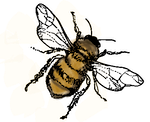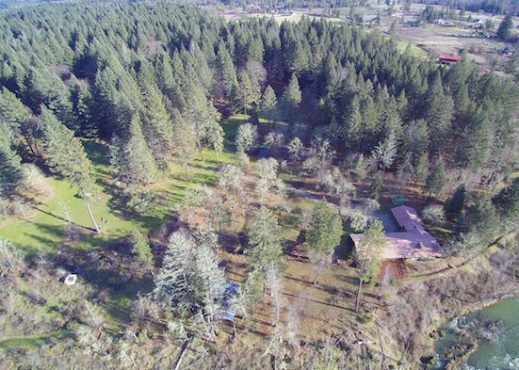The Land & People

Located in the Illinois Valley of Southern Oregon lies the home of our gathering. We are nestled alongside the Illinois River, just east of the Rogue River and Siskiyou National Forest. The climate and biodiversity of this area over time have created a very abundant environment for a wide variety of plants and animals to thrive, and therefore, a home to humans for a very long time.
Cedar Bloom sits on the original land of the Takelma People. We have an understanding of the privilege and give thanks daily for the opportunity to be in connection with these lands. We are in a continuing relationship of educating ourselves through connection, listening, research, and story sharing with the Takelma people of the Illinois River valley region. We are committed to continuing to build relationships and welcome all Takelma people to share their story and visit these lands to be held and honored amongst the forest and human kin that dwell here.


Jennie, a Rogue River Takelma woman, who crafted the dress worn in this iconic Peter Britt portrait.

Group of Takelma Native Women and Children, Oregon, circa 1880.

Members of the Confederate Tribes of Siletz Indians at SOU celebrate 2019’s Indigenous People’s day.
Takelma means “those who dwell along the river.”
For thousands of years, the Takelma people lived in the Illinois and Rogue River valleys, what is now known as Josephine County. They lived in small bands close to the land. Interior southwest Oregon has pronounced seasons and the ancient Takelma adapted to these seasons by spending spring, summer and early fall months collecting and storing food for the winter season.
Salmon was central to their food source and way of life. The salmon diet was supplemented by game, such as deer, elk, beaver, bear, antelope and bighorn sheep. Smaller mammals, such as squirrels, rabbits and gophers, might have been snared by both men and women. They gathered the root of the Camas plant, part of the asparagus family, as well as acorns from the two native species of Oaks, the Oregon white oak and California black oak. Other vegetation included manzanita berries, pine nuts, tarweed seeds, wild plums and sunflowers. The Takelma are also known to have cultivated a native tobacco plant, but otherwise relied on the fruits of the wilderness for their survival. The main utensils included horn, bone and wood-made implements and a great variety of baskets constructed generally by twining on a hazel warp. Stone was used in the making of arrowheads and pestles. The clothing and personal adornment of the Takelma was similar to the tribes of northern California. Notable characteristics include facial painting, red-headed woodpecker scalps for men and basket caps for women. The women also tattooed the skin in three stripes and men tattooed the left arm.
European Settlement of the Illinois Valley began by the 1830’s, as the gold and logging industries developed. By the end of 1856, the traditional residents of the Rogue and Illinois River valleys were forcibly removed and relocated to both the Siletz Reservation on the central Oregon coast, and the Grand Ronde Reservation. The Takelma were joined on the reservations by their neighbors, the Athapaskans and the Shasta, as well as tribes from even farther away, such as the Coos and Tillamook. It is reported that by 1906 less than ten Takelma were alive and able to speak their native language.
In 1954, one hundred years after the western Oregon Indians were removed to the Grand Ronde Reservation; the indigenous peoples were subjected to the final effort by the United States to colonize the remainder of their lands through Federal termination policy. The permanent Grand Ronde Reservation, settled in 1855 and established by presidential executive order in 1857, was terminated by Congress, and the tribal people lost their Federal recognition. The seven ratified treaties that ceded to the United States millions of acres of land, most of western Oregon, which was occupied by over 60 tribal nations, were nullified. These 60 tribes were declared by Congress to be assimilated, and termination was enacted to free them from continued government management and oppression. In western Oregon, native people appeared to cease to exist, and for 29 years the Grand Ronde descendants suffered disenfranchisement and a multitude of social problems. The reservation’s tribal cultures, languages, and community were severely fractured and much was lost. Terminated tribal members were rejected by other tribes as having willingly sold out to the Federal government. During the post-termination era, despite all of the problems the tribal members faced, they found ways to survive and worked to restore the tribe. In 1983, the Grand Ronde Tribe was restored.
Source: Lewis, David Gene. “Termination of the Confederated Tribes of the Grand Ronde Community of Oregon: Politics, Community, Identity.” Order No. 3356586 University of Oregon, 2009. Ann Arbor: ProQuest. Web. 29 Oct. 2019.
The restoration of the Grand Ronde Reservation in 1983 was made possible entirely through grassroots efforts by indigenous peoples and their allies. These grassroots efforts are the culmination of exhaustive efforts to solidify the space for indigenous people to carry their way of live forward.
In 1994, for the first time in over 140 years, an ancient ceremony took place to welcome home and give thanks for the returning salmon, on the Kanaka Flats of the Applegate River. People of all heritages were welcomed at the annual Salmon Gathering on the Applegate River until 2006. In 2007, the ceremony was moved to the place where it was held for thousands of years: the Tilomikh (Powerhouse Falls), on the Rogue River near Gold Hill, Oregon. Since then, the ceremony has taken place annually in its traditional location, demonstrating that the Takelma culture is alive and will continue into the future.
In 2019, Members of the Confederate Tribes of Siletz Indians celebrate Indigenous People’s Day, hosted by Southern Oregon University for native students, nonnative students, and community members. After a traditional salmon bake and ceremonial music performance, an Intergenerational Activism Panel concluded the event.
It’s imperative that as settlers of these lands, we both acknowledge and support the continued efforts of the local tribes who first stewarded this land, and continue to live and thrive in Southern Oregon today.

Today, Takelma descendents continue to reside on or near the Siletz and Grand Ronde reservations. Agnes Baker Pilgrim brought back the Salmon Ceremony to Southern Oregon and known to locals as the ‘Keeper of the Sacred Salmon Ceremony. Agnes, one of the oldest grandmothers of the International Council of the 13 Indigenous Grandmothers, returned to the Rogue Valley and though she passed in 2019, her voice can be heard strong and clear, proving that the spirit and blood of her people are still with us.



We were deeply honored to have Grandma and her daughter Nadine join us in June 2019 for our 7th annual gathering. Grandma came to share stories and to do a land blessing for Cedar Bloom. That following September, we hosted Grandma’s 95th Birthday at Cedar Bloom. Her family joined us from near and far. We gifted Grandma a mural of herself painted by Artist Maggie Lochtenberg. There was song, ceremony and celebration. Grandma Aggie left our earth plane just a few months later on November 27, 2019.
In June of 2022 Grandma’s Granddaughter Tanya joined us along with her mother Nadine. It felt important to honor them both as we shift into this transition without Grandma. Her family is always welcome to the land to fish, hunt, gather upon and use the land as needed, as this is their original homeland.
We feel honored to be stewards of this land. One of our main visions for this land is to protect its cultural and environmental heritage. We will be placing the land into a conservation trust so no logging or future development can occur. For the many years to come, we will explore the ways can live in harmony with the natural world for the greater good of people and the plants and animals we depend on.
You can donate to Grandma’s Legacy Fund here: https://agnesbakerpilgrim.org/join-our-team/donate/

THE OFFERINGS
Cathedrals of Oak, Madrone, Fir, and Cedar, wide grasslands, and river front meadows will hold us gently as we sleep under the stars together. Wandering trails meander throughout the land offering you a glimpse of our resident fox, deer, and turkeys, as well as hundreds of different Plant species. Several food gardens and our greenhouse provide an opportunity to deepen relationships to the food we consume and the beauty of cut flowers we are enamored by.

THE MAGIC
The magic and depth of the forest stretch in every direction. The waters of the Springtime sky bring subtle rainbows of forest flowers accenting the endless beauty of this exquisite land. As the Summer comes, an abundance of berries, blooms of wildflowers, and wild edibles adorn their land with their nourishment. We can swim to the middle of the river, sit upon mermaid rock or lay upon our floating dock while the sun kisses our skin. The land we gather on and the Illinois River that runs for almost a mile upon the shores, is a hidden gem amongst the valley. We have been told that the land holds one of the best swimming holes in all of Southern Oregon.

THE STILLNESS
The beauty and stillness of this natural forest sanctuary makes it the perfect place to retreat, renew, and reconnect with our nature and each other. The opportunity to sit, listen, and receive the teachings of our plant, animal, and beyond human kin, provides the possibilities to continue to remember the Wisdom of the Forest within us.

PLANT & ANIMAL RELATIONS
We are very fortunate to be surrounded by a widely diverse population of flora and fauna. As caretakers of this sacred land, we feel a strong responsibility to honor our plant and animal allies by not only protecting them and their habitat, but also to help educate others about what lives and grows here by providing people with opportunities to experience the beauty of these plants and animals for themselves. For this reason, we are honored to host the many different groups who will gather here on this land for learning and communing with the nature that flourishes here. We feel very fortunate to be involved in this process of helping promote a sustainable and abundant future for all living things on this planet by sharing knowledge and skills from the human past that can make a sustainable lifestyle a reality for everyone everywhere. Reciprocal Communion with the Plant and Animal is a continual practice for us as stewards of these lands and important for us to have the relations felt throughout the web of our community, seen and unseen.
The plant life here is incredibly diverse. This land is home to many native grasses, ferns, and berries, wild flowers, as well as many other edible and medicinal plants and fungi such as mugwort, self-heal, elderberry, roses hips, hawthorn, blackberries, wild mint, lemonbalm, yarrow soap root, and a variety of mushrooms. The tree community is a blend of hardwoods like Manzanita, Madrone, and several kinds of Oaks along with mature Fir, Pine, Cedar trees, Alder, Maple and fruit trees. With special attention to management of non-native and invasive plants, Spirit Weavers is committed to maintaining a well balanced forest ecosystem with high biodiversity.






